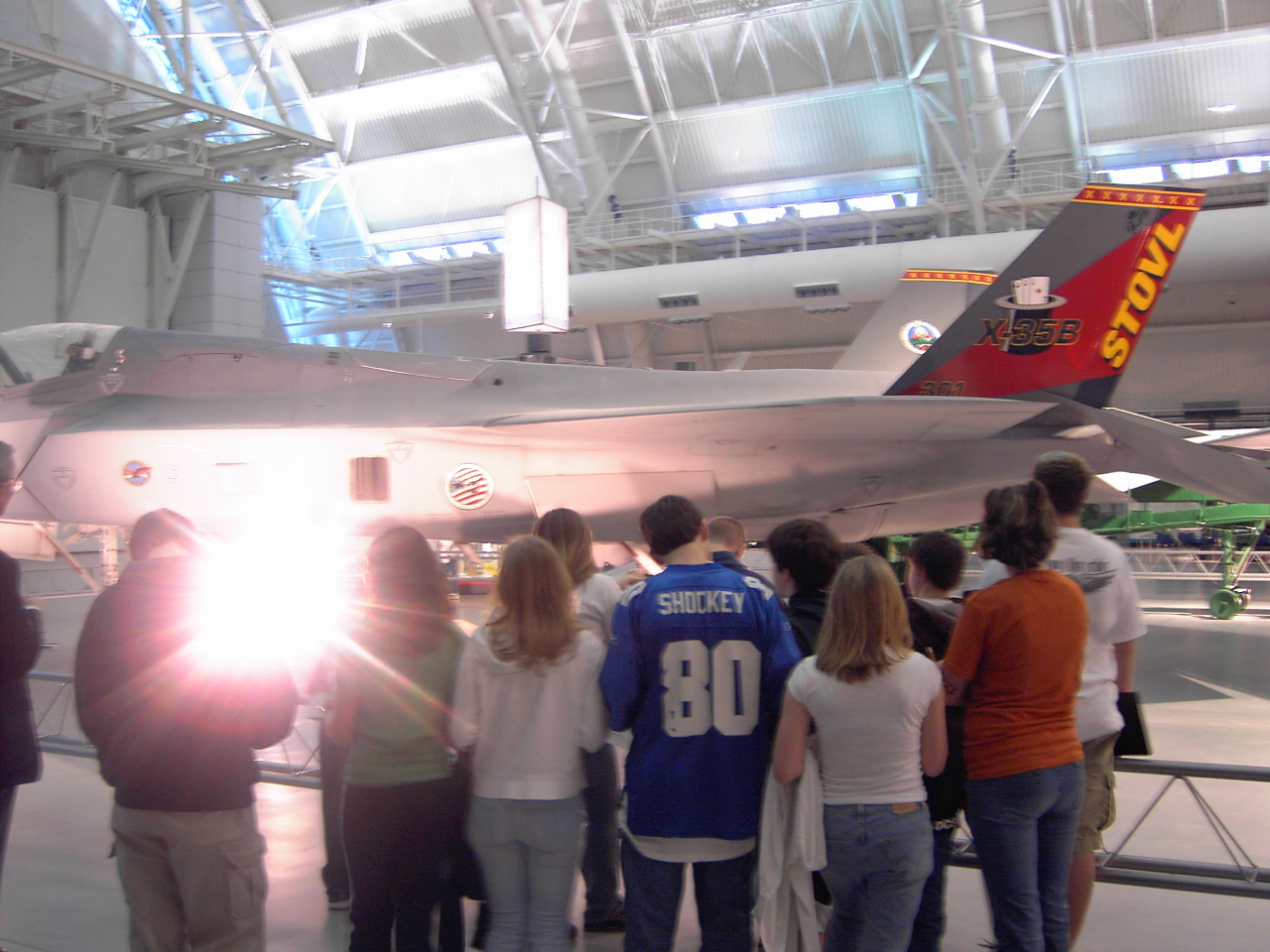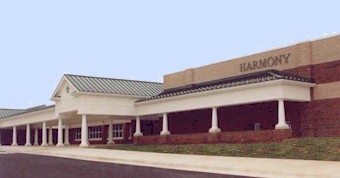| The staff at Harmony is top-notch. We operate in teams, and the English,
Special Education, and Science teachers who work with me on my team have helped
developed a close-knit unit where we enjoy each others' company and respect each
other as professionals. The academic team works on the block schedule, so we
meet physically every other day in order to discuss student progress, coordinate
interdisciplinary lessons and activities, and to align our schedules for
extra-curricular and team activities outside the classroom. We have developed
into a tightly knit unit as we have developed our own traditions and become
intimately familiar with each other's personalities and teaching styles. |

Students at the Udvar-Hazy Air & Space Museum |
| Our
team schedules an annual field trip to the White House and Capitol, and we also
explored the Udvar-Hazy branch of the Smithsonian Air and Space Museum in
Chantilly, VA. We have also volunteered our services to clean up a three-mile
stretch of the C & O Canal near Harper's Ferry, West Virginia.
|
The idea
[of the History Alive approach] is
to make teaching and learning the Social Studies an active, interactive
experience that helps increase retention and raise interest levels.
|
Within the Social Studies Department, we have all been
trained in the History Alive! approach of teaching, which includes techniques
such as the interactive slide lecture, the experiential lesson, the Interactive
Student Notebook, short dramatic plays called "act-it-outs," and reflective writing assignments. The idea is
to make teaching and learning the Social Studies an active, interactive
experience that helps increase retention and raise interest levels. The
approach is designed for the History class, but I have adapted many of the
topics of 8th grade Civics so they can be presented through the History Alive!
model. When I was contacted by the Teaching-point publishers in 2002 to convert
the lesson plans on my website into a book of resources for out-of certificate
and overworked teachers, I incorporated many of these methods into my book,
entitled Civics. |
 When the personal life of a teacher is transformed by broad-sweeping life change,
it has a direct impact on his or her teaching style and ability to commit to the
profession and the students. It was one of the greatest challenges of my life
to walk into a 7th grade US History classroom and teach with the same enthusiasm
and animation knowing my life was falling apart around me at home. Once I had
secured a "new normal" economically and in respect to my family (much
the same way our nation had to become acclimated to the "new normal"
after 9/11), I was
able to bring a new joy and commitment to the classroom. In the meantime, I had
made another change: I became Social Studies department chair at Harmony
Intermediate School, a new school being built to accommodate the high
level of growth in western Loudoun County. This change allowed me to be home in
time to monitor my still under-aged children while being able to bring all my
skills and talents to the Social Studies classroom. I had to mourn the loss of teachings
on the high school level, but I find the malleability and freshness of eighth
graders rewarding. One day, when the county builds a high school that is
situated in a place that lets me tend to the needs of my own children while
performing additional duties at the high school level, I may consider returning
to the the high school classroom in US History (11th grade) or US Government
(12th grade)
When the personal life of a teacher is transformed by broad-sweeping life change,
it has a direct impact on his or her teaching style and ability to commit to the
profession and the students. It was one of the greatest challenges of my life
to walk into a 7th grade US History classroom and teach with the same enthusiasm
and animation knowing my life was falling apart around me at home. Once I had
secured a "new normal" economically and in respect to my family (much
the same way our nation had to become acclimated to the "new normal"
after 9/11), I was
able to bring a new joy and commitment to the classroom. In the meantime, I had
made another change: I became Social Studies department chair at Harmony
Intermediate School, a new school being built to accommodate the high
level of growth in western Loudoun County. This change allowed me to be home in
time to monitor my still under-aged children while being able to bring all my
skills and talents to the Social Studies classroom. I had to mourn the loss of teachings
on the high school level, but I find the malleability and freshness of eighth
graders rewarding. One day, when the county builds a high school that is
situated in a place that lets me tend to the needs of my own children while
performing additional duties at the high school level, I may consider returning
to the the high school classroom in US History (11th grade) or US Government
(12th grade)